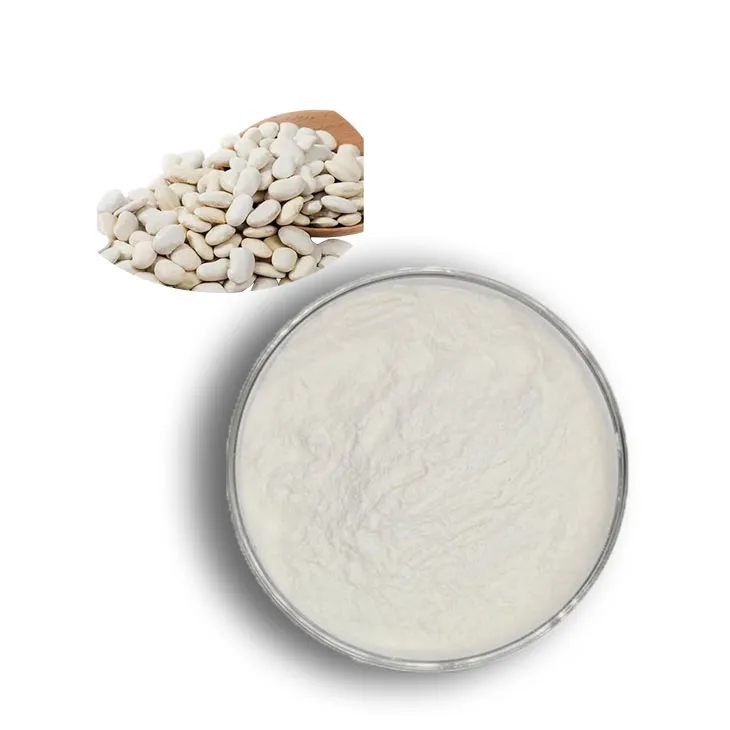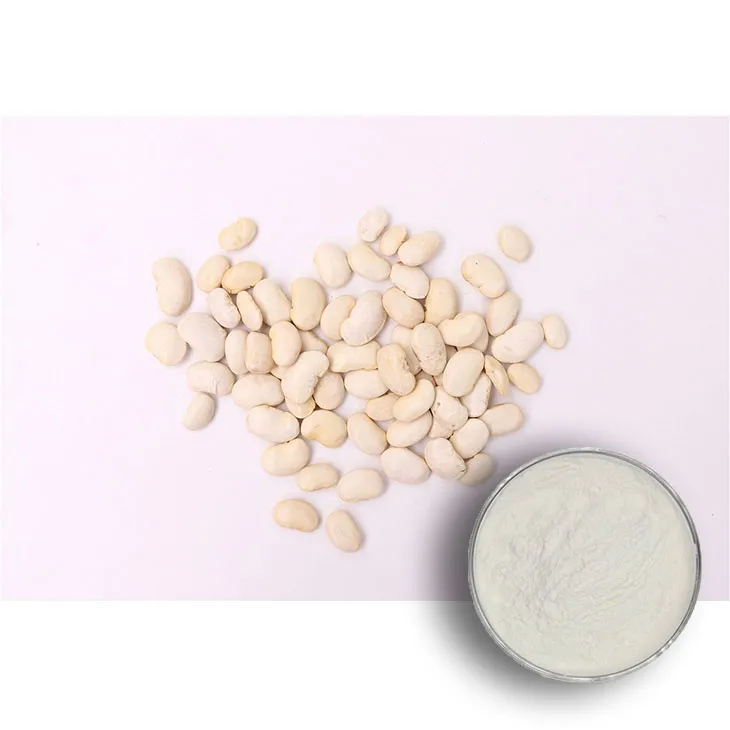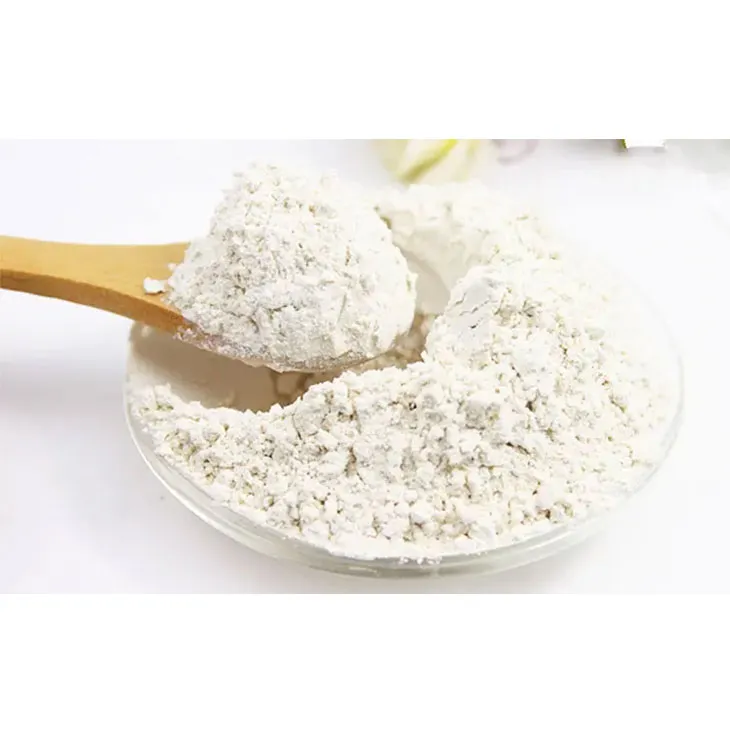- 0086-571-85302990
- sales@greenskybio.com
Organic Supercritical CO₂ Extraction of Kidney Bean Extracts
2024-11-26

1. Introduction
Supercritical CO₂ extraction of organic Kidney Bean Extract has emerged as a cutting - edge technique in the field of natural product extraction. Kidney beans, a common and widely consumed legume, are known to contain a variety of bioactive compounds. However, traditional extraction methods often have limitations in terms of efficiency, selectivity, and the purity of the extracts obtained. The supercritical state of CO₂ offers a unique solution to these problems.
Supercritical CO₂ refers to the state of carbon dioxide where it has properties between those of a gas and a liquid. At supercritical conditions, CO₂ has enhanced solubility power and can penetrate the matrix of kidney beans effectively. This allows for the extraction of valuable components with high efficiency while minimizing the extraction of unwanted substances.

2. The Supercritical State of CO₂
The supercritical state of CO₂ is achieved when the temperature and pressure of CO₂ are above its critical point. The critical temperature of CO₂ is approximately 31.1 °C, and the critical pressure is around 73.8 bar. When in this state, CO₂ exhibits unique physical properties.
2.1 Solubility Properties
Supercritical CO₂ has a remarkable ability to dissolve a wide range of compounds. For Kidney Bean Extraction, it can selectively dissolve components such as phenolic compounds, flavonoids, and proteins. The solubility can be adjusted by varying the temperature and pressure conditions during the extraction process. For example, lowering the pressure may cause the solubility of certain compounds to decrease, leading to their precipitation and separation from the extract.
2.2 Penetration Ability
Due to its low viscosity and high diffusivity in the supercritical state, CO₂ can easily penetrate the cellular structure of kidney beans. This enables it to reach the target compounds that are located within the cells. In contrast, traditional solvents may have difficulty in accessing these compounds, resulting in lower extraction yields.

3. Selectivity in Kidney Bean Extraction
One of the major advantages of supercritical CO₂ extraction is its selectivity. Kidney beans contain a complex mixture of compounds, and the ability to selectively extract certain components is crucial for obtaining high - quality extracts.
3.1 Separation of Different Constituents
Supercritical CO₂ can be tuned to separate different constituents present in kidney beans. For instance, by adjusting the extraction parameters, it is possible to preferentially extract antioxidant - rich components while leaving behind other less desirable substances. This is achieved through the differential solubility of various compounds in supercritical CO₂ under different conditions.
- Phenolic compounds: These are important for their antioxidant properties. Supercritical CO₂ can be optimized to extract phenolic compounds such as phenolic acids and flavonoids effectively.
- Proteins: While proteins are also present in kidney beans, supercritical CO₂ extraction can be designed in such a way that the extraction of proteins is minimized if the target is mainly the phenolic and flavonoid components.
3.2 Comparison with Traditional Extraction Methods
Traditional extraction methods such as solvent extraction using organic solvents like ethanol or hexane may not offer the same level of selectivity. These solvents often extract a wide range of compounds simultaneously, requiring additional purification steps to isolate the desired components. In contrast, supercritical CO₂ extraction can achieve a relatively pure extract in a single step, reducing the need for complex purification procedures.

4. Organic Nature and Market Demand
The organic nature of supercritical CO₂ extraction of kidney bean extracts is a significant advantage. In today's market, there is an increasing demand for natural and pure extracts.
4.1 Meeting Consumer Preferences
Consumers are becoming more conscious about the products they consume, preferring natural and organic ingredients. Kidney bean extracts obtained through supercritical CO₂ extraction, being organic, are more appealing to consumers. They are free from the residues of traditional organic solvents, which may be of concern in some applications.
4.2 Applications in Different Markets
- Food and Beverage Industry: Kidney bean extracts can be used as natural additives in food and beverages. For example, they can be added to functional foods for their antioxidant and anti - inflammatory properties. The organic nature of the extracts makes them suitable for use in products labeled as "natural" or "organic".
- Cosmetic Industry: In cosmetics, kidney bean extracts can be incorporated into skincare products. Their antioxidant properties can help in protecting the skin from oxidative stress. The demand for natural and organic ingredients in cosmetics is on the rise, and supercritical CO₂ - extracted kidney bean extracts can meet this demand.
- Pharmaceutical Industry: There is potential for kidney bean extracts in the pharmaceutical field. Research has shown that certain compounds in kidney beans may have pharmacological activities. The pure and organic extracts obtained through supercritical CO₂ extraction can be further studied for drug development.

5. Beneficial Properties of Kidney Bean Extracts
Kidney bean extracts obtained through supercritical CO₂ extraction may possess various beneficial properties, which make them a valuable source for further product development.
5.1 Antioxidant Properties
The presence of phenolic compounds and flavonoids in kidney bean extracts contributes to their antioxidant activity. Antioxidants play a crucial role in neutralizing free radicals in the body. Free radicals are unstable molecules that can cause oxidative damage to cells, leading to various diseases such as cancer, cardiovascular diseases, and neurodegenerative disorders. By consuming products containing kidney bean extracts with antioxidant properties, individuals may reduce their risk of these diseases.
5.2 Anti - inflammatory Properties
Some compounds in kidney bean extracts have been shown to have anti - inflammatory effects. Inflammation is a natural immune response in the body, but chronic inflammation can be harmful. Kidney bean extracts can potentially be used to treat or prevent inflammatory conditions such as arthritis and inflammatory bowel diseases.
5.3 Other Potential Properties
There may be other potential properties of kidney bean extracts that are yet to be fully explored. For example, they may have anti - microbial properties, which could be useful in food preservation or in the development of new antibiotics. Additionally, they may have potential in regulating blood sugar levels, which is of great importance for diabetic patients.
6. The Extraction Process
The supercritical CO₂ extraction process of kidney bean extracts typically involves several steps.
6.1 Pretreatment of Kidney Beans
- First, the kidney beans are cleaned to remove any dirt, debris, or foreign matter.
- Then, they may be dried to a suitable moisture content. This is important as excessive moisture can affect the extraction efficiency.
- The dried kidney beans may be ground into a fine powder to increase the surface area available for extraction.
6.2 The Extraction Setup
The extraction is carried out in a specialized extraction vessel. The supercritical CO₂ is pumped into the vessel at the desired temperature and pressure conditions. The CO₂ circulates through the kidney bean powder, dissolving the target compounds. The extract - laden CO₂ is then passed through a separator where the pressure is reduced, causing the extract to precipitate out.
6.3 Post - extraction Processing
After the extraction, the obtained extract may require further processing. This could include drying to remove any remaining CO₂ and moisture, and packaging in appropriate containers to preserve its quality.
7. Challenges and Future Perspectives
Although supercritical CO₂ extraction of kidney bean extracts has many advantages, there are also some challenges associated with this technique.
7.1 High Equipment Cost
The equipment required for supercritical CO₂ extraction, such as high - pressure pumps and extraction vessels, is relatively expensive. This can limit the adoption of this technique, especially by small - scale producers. However, as the technology becomes more widespread, the cost may be expected to decrease over time.
7.2 Optimization of Extraction Parameters
Finding the optimal extraction parameters such as temperature, pressure, and extraction time for different kidney bean varieties and target compounds can be a complex task. Further research is needed to fully understand the relationships between these parameters and the extraction efficiency and quality of the extracts.
7.3 Future Perspectives
Despite the challenges, the future of supercritical CO₂ extraction of kidney bean extracts looks promising. With ongoing research, the technique is likely to become more efficient and cost - effective. There is also potential for the discovery of new bioactive compounds in kidney beans through more refined extraction processes. This could lead to the development of new products in various industries, further expanding the market for kidney bean extracts.
FAQ:
What are the main advantages of supercritical CO₂ extraction for kidney bean extracts?
The main advantages include selectivity, which can effectively separate different constituents in kidney beans. Also, as it is an organic method, it meets the demand for natural and pure extracts. It provides an ideal medium in the supercritical state for extraction.
What beneficial properties might kidney bean extracts obtained by supercritical CO₂ extraction have?
Kidney bean extracts obtained through this method may possess properties such as antioxidant, anti - inflammatory and others, which make it valuable for further product development.
How does the selectivity of supercritical CO₂ extraction work in the case of kidney bean extracts?
The supercritical state of CO₂ allows it to interact differently with various components present in kidney beans. This differential interaction enables the separation of different constituents effectively, which is the basis of its selectivity.
Why is the organic nature of supercritical CO₂ extraction important for kidney bean extracts?
The organic nature is important because there is an increasing demand for natural and pure extracts in various markets. Organic extraction methods are preferred as they result in extracts that are more acceptable in natural - product - oriented markets.
What are the potential applications of kidney bean extracts obtained by supercritical CO₂ extraction?
Due to their beneficial properties like antioxidant and anti - inflammatory effects, they can be used in the development of various products such as dietary supplements, cosmetics, and functional foods.
Related literature
- Supercritical Fluid Extraction of Bioactive Compounds from Legumes"
- "Advances in Organic Extraction of Plant Extracts: The Case of Kidney Beans"
- "Supercritical CO₂ Extraction: A Promising Technique for Kidney Bean - Based Natural Products"
- ▶ Hesperidin
- ▶ citrus bioflavonoids
- ▶ plant extract
- ▶ lycopene
- ▶ Diosmin
- ▶ Grape seed extract
- ▶ Sea buckthorn Juice Powder
- ▶ Beetroot powder
- ▶ Hops Extract
- ▶ Artichoke Extract
- ▶ Reishi mushroom extract
- ▶ Astaxanthin
- ▶ Green Tea Extract
- ▶ Curcumin Extract
- ▶ Horse Chestnut Extract
- ▶ Other Problems
- ▶ Boswellia Serrata Extract
- ▶ Resveratrol Extract
- ▶ Marigold Extract
- ▶ Grape Leaf Extract
- ▶ blog3
- ▶ Aminolevulinic acid
- ▶ Cranberry Extract
- ▶ Red Yeast Rice
- ▶ Red Wine Extract
-
Angelica sinensis extract
2024-11-26
-
Tongkat Ali Extract Powder
2024-11-26
-
Berberis aristata Extract
2024-11-26
-
Curcuma Longa Extract/Turmeric extract
2024-11-26
-
Green coffee bean Extract
2024-11-26
-
Sea buckthorn oil
2024-11-26
-
Red Vine Extract
2024-11-26
-
Hericium erinaceus extract powder
2024-11-26
-
Cactus Extract
2024-11-26
-
Phellodendron Extract
2024-11-26





















